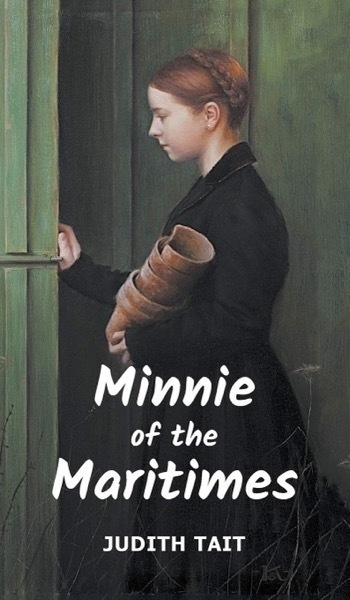📚 Purchased from the Grand-Pré National Historic Site Visitors Center. The Center has lots of CDs of Acadian and traditional music, and many books on Acadian history and culture, with a focus on the British government’s deportation from 1755-62 of the Acadians from Grand-Pré. The Center also has lots and lots of versions and retellings of Longfellow’s “Evangeline,” which I really must get to one day.

These Good Hands by Carol Bruneau
From the bookflap: “Set in the early autumn of 1943, These Good Hands interweaves the biography of French sculptor Camille Claudel and the story of the nurse who cares for her during the final days of her thirty-year incarceration in France’s Montdevergues Asylum.”
Still on my to-read shelf. I bought this early in our trip thinking I’d get back into reading a real book (by which I mean, a good novel). Even though the novel does not have anything to do with Nova Scotian or Acadian culture, I loved the description of the book from its flap and that’s why I bought it.

Minnie of the Maritimes by Judith Tait
Also not a book with Acadian themes, but it sweeps from one end of Nova Scotia to another, and is a fine first novel. The author’s bio on the last page says this:
Investigating her ancestors led to the fictional life of a real person, Minnie Healy, born in 1864 outside the village of Port Williams in Kings Co., Nova Scotia. No other details of her life were recorded.
Set in the late 19th and early 20th century, the book follows young Minnie as she is cast out from her family’s home. Her pregnancy has cast shame on her family in the community and so she is sent to Montreal, where she delivers the child in a Catholic-run facility for unwed mothers – who are not allowed to keep their children. From there, she lives on Prince Edward Island with her aunt’s family, marries and moves to Halifax, and then ends her days in Wolfville.
It packs a lot of incident for a short book, and there are tinges of melodrama here and there. But the descriptions of those times – along with vintage photographs of the era that help inform the book’s atmosphere – are bracingly physical with great details. Minnie’s train ride to Montreal, the cold stoniness of the Catholic facility, the summers and winters of PEI as she grows to young womanhood – there are so many lovely episodes that the book is a joy to read.
But it’s not just nostalgia for a lost time. I’d heard about the Halifax Explosion but Tait’s description of its aftermath, as Minnie wanders through a neighborhood scorched and scraped bare, was unsettling. The book may appear to be a cozy, but its report has claws.
A small book, maybe a minor book, but a perfect little gift of a book for anyone who loves Nova Scotia and wants to know what life 100+ years ago felt like.